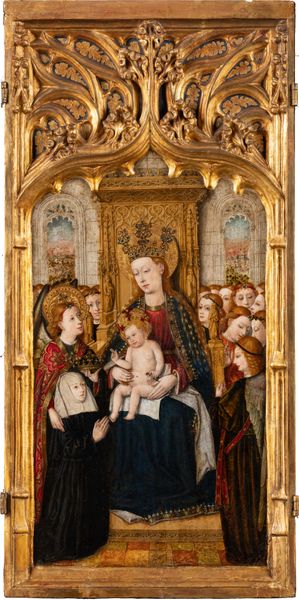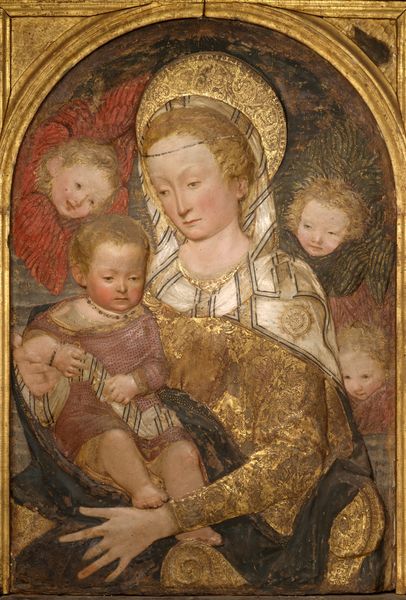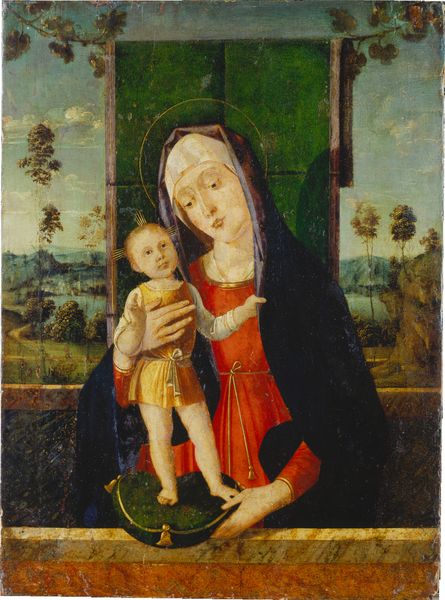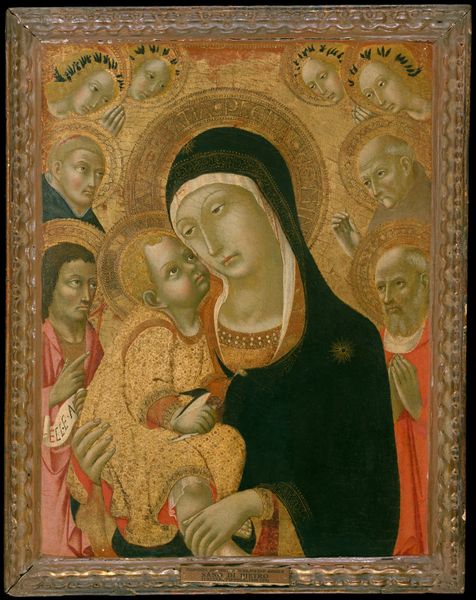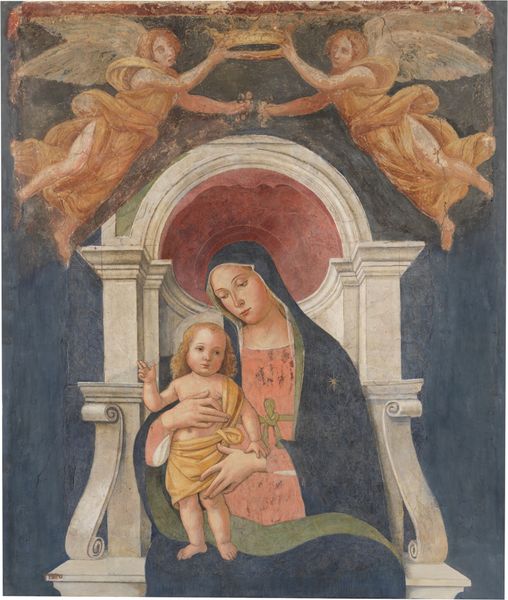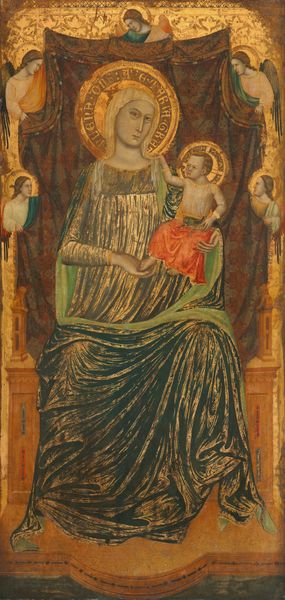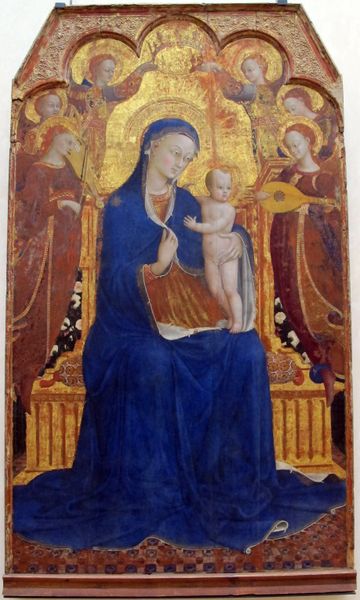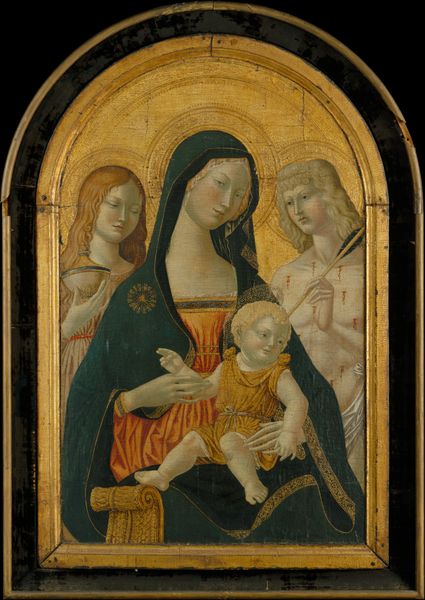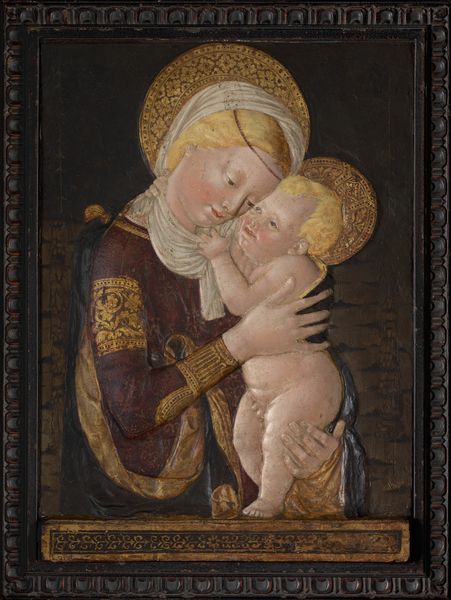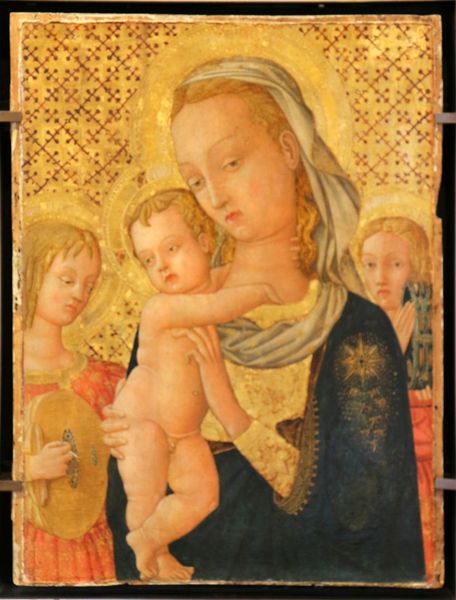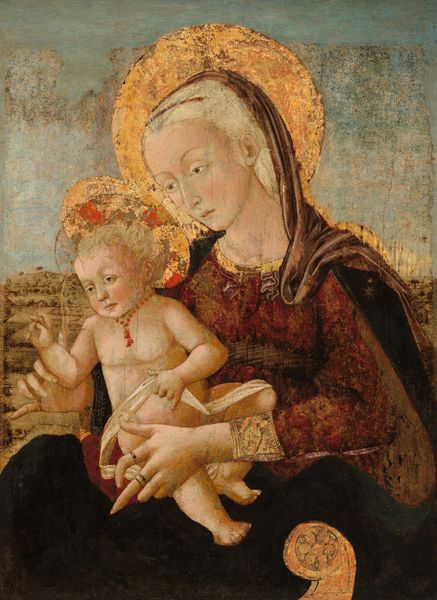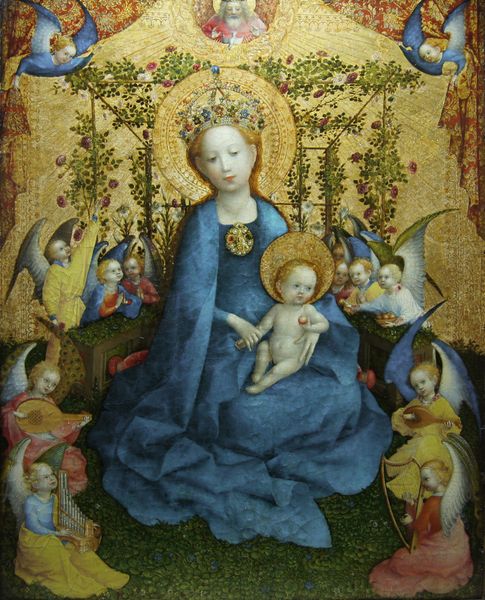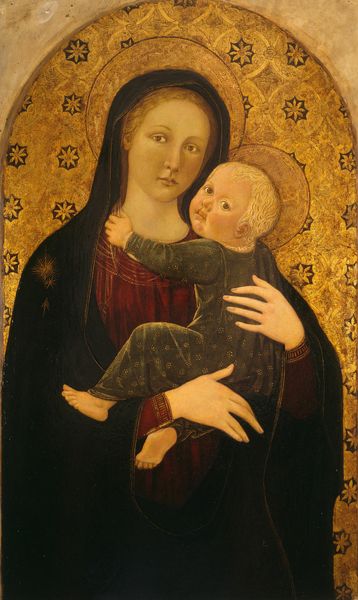
Madonna and Child with Angels in the Rose Arbor c. 1475 - 1500
0:00
0:00
tempera, painting, oil-paint, fresco
#
portrait
#
woman
#
tempera
#
painting
#
oil-paint
#
flower
#
fresco
#
11_renaissance
#
oil painting
#
child
#
genre-painting
#
italian-renaissance
#
portrait art
#
angel
Dimensions: 63.8 x 49.2 x 0.5 cm
Copyright: Public Domain
Curator: The "Madonna and Child with Angels in the Rose Arbor," attributed to Pseudo-Pier Francesco Fiorentino, likely painted between 1475 and 1500, invites contemplation. Currently residing at the Städel Museum, this oil and tempera on panel artwork offers a tender vision. Editor: The first thing that strikes me is its almost decorative flatness, particularly in the backdrop. It feels stylized and considered, despite the subject's inherent sentimentality. Curator: Absolutely. The rose arbor is far more than a mere background. Roses, historically and consistently, have symbolized the Virgin Mary. Here, the rose suggests divine love, purity, and perhaps a premonition of Christ's sacrifice. Editor: And the tight, almost claustrophobic arrangement of the flowers and foliage against the light-blue backdrop—that seems key to understanding the mood. It adds to the intensity. But even the gold leaf around the heads—very flat and geometric against the three-dimensional faces. Curator: Those halos provide celestial markers—a direct conduit of holy association. Also note how the lilies among the roses represent the purity and innocence of the Virgin. This careful weaving of floral symbolism deepens the narrative. The cultural memory that the viewer would bring amplifies these understandings, these signs. Editor: The composition creates a visual push-pull—a flattened, patterned field versus rounded, shadowed forms. This effect certainly underscores a thematic duality, between the earthly realm and the spiritual. The interplay with the darker tone of Mary's garb versus the lighter colors around the angels makes Mary herself appear even more separate from them. Curator: Perhaps she's mediating the realms for us. We see the Mother protecting the Son, a timeless subject infused with a Renaissance fascination for layering symbolic languages that was widely known to a public whose very lives depended upon its subtle semiotics. Editor: The painting definitely rewards that slower, more contemplative looking, doesn't it? The juxtaposition of these elements reveals how the work bridges both decorative intent with layered religious meaning. Curator: I find the artist uses established symbols and styles to create a world with rich resonances, while it also offers access into more devotional narratives, speaking to fundamental aspects of belief. Editor: Seeing how formalism blends with deep symbolic weight really adds a whole new dimension to understanding Renaissance portraiture.
Comments
stadelmuseum almost 2 years ago
⋮
This painting was originally acquired as the work of Alesso Baldovinetti. However, it is by an unidentified artist referred to by the name of convenience “Pseudo-Pier Francesco Fiorentino”. The epigone combined various artistic trends of the time and drew on the rich repertoire of motifs of great Florentine masters such as Pesellino and Fra Filippo Lippi. The large number of near-serially produced Madonna paintings has given rise to the assumption that they were the product of a workshop whose head has yet to be identified. This way of working says a lot about the conception and appreciation of art of the time – for less wealthy clients, decorative qualities counted more than the originality of the design.
Join the conversation
Join millions of artists and users on Artera today and experience the ultimate creative platform.
